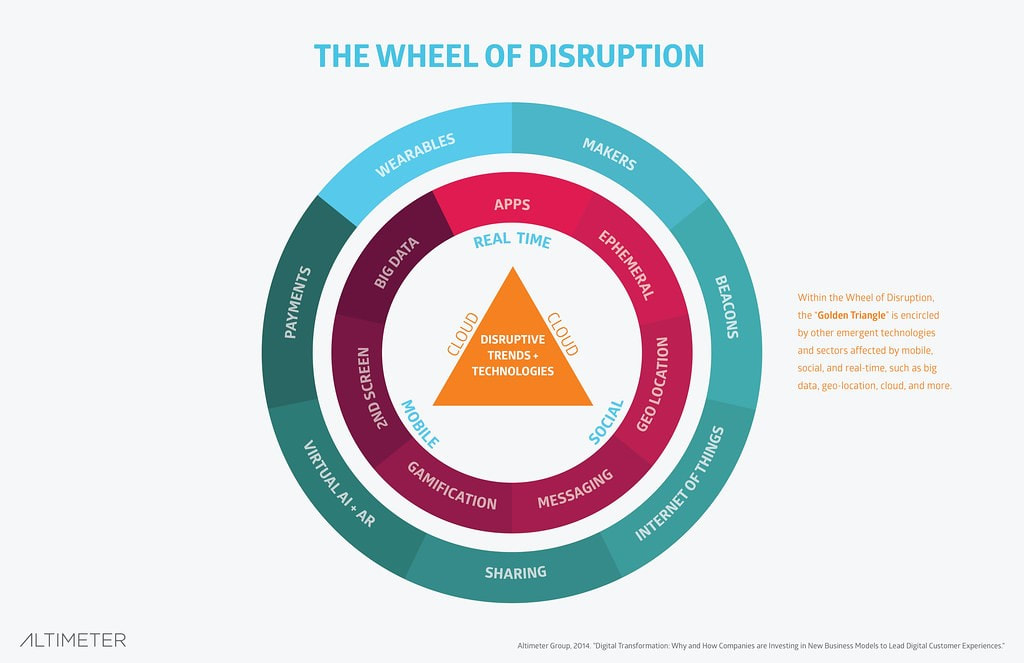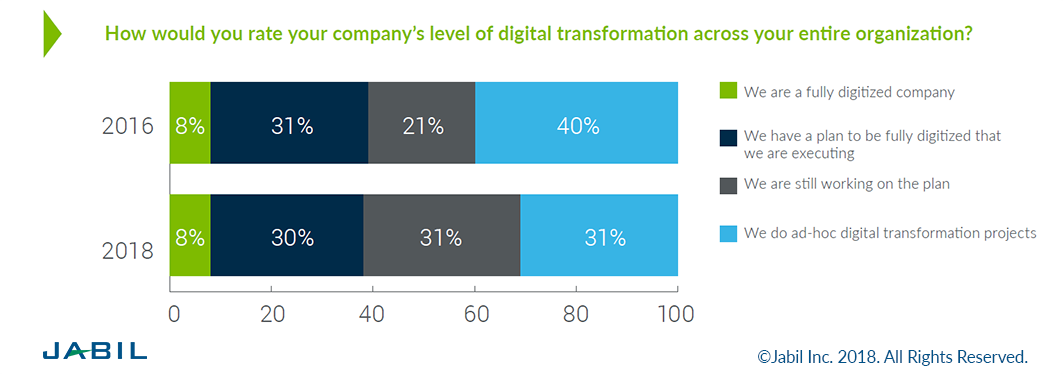The value of a company is determined by activities such as value monetization and value communication. This type of company behavior is called digital transformation. It covers the following aspects of business:
- Customer: How do you leverage customer relations and redefine the path to purchase while giving emphasis to their buying experience?
- Competition: What steps do you take to give your company the competitive advantage?
- Data: Why should a company focus more on data and practice real time data driven decision making?
- Innovation: How do you keep innovating in the ever changing world of digital transformation?
- Value: How does digitization create new businesses?
But the question is “What if you are a novice and you don’t know where to start?” Let’s take a look at the 6 easy steps that you can follow to begin your digital transformation journey.
Step 1: Identify the New Business Processes and Transformation Objectives
Ideally, digital transformation means changing the existing business model – this could be changing the entire business operation or just something small like optimizing customer feedback mechanism. It needs the company to take calculated risks by analyzing the markets and company data to check the scope for optimization for the following reasons:
- To improve end-user experience to improve loyalty, productivity, revenues and retention
- To reduce costs for business processes and integrate supply chain partners
- To reduce complexity, solve issues before they occur and gain visibility
- To optimize infrastructure and operations
- To derive insights from analytics to make wise decisions and gain a competitive advantage
Step 2: Identify the Key Technologies in the Market
There is no need to get overwhelmed with modern technologies or trying to implement everything in your current business process. Technology is just a way to manifest your ideas. To get a better understanding, let’s take a look at the ‘Wheel of Disruption’. It is a ‘Golden Triangle’ that is encircled with emerging technologies such as mobile, social and real time.
Step 3: Executive Buy-In Should be a Priority
Now that you have your digital strategy and solutions structured, the next step is to incorporate this inside the company and obtain executive buy-in.
Step 4: Finalize a Talent Pool and Define a Roadmap
The fourth step is to create a talent pool that helps the company to define a roadmap to successfully navigate through the digital transformation process. A talent pool can either be gathered in-house or by outsourcing it. The benefit of outsourcing it will be that there will less costs incurred to train and recruit new employees.
Once a talent pool is finalized, it is time to define a roadmap to implement digital transformation. Remember, this roadmap should be planned in phases. Always test on a small scale to ensure the transformation works for the company’s benefit. Risk mitigating milestones should be defined at the end of each phase, where approvals are taken from the top management of the company, vendors, etc.
Step 5: Determine Key Performance Indicators for Your Future Journey
Key Perform Indicators (KPI) demonstrate the effectiveness of the plan and help you understand the path forward for the future. The company will need to set smart goals, a clear achievable figure and a timeline. The team will hence, be able to keep focus on the end goal. Strategies need to always be updated based on the market insights and results.
As we all know that the future can be predicted only by looking at the present. Hence, it is of utmost importance to clearly communicate the work plan to the workforce and help them implement it in their practical day to day lives. To drive the company into the future and to understand the digital transformation that will take place, the workforce needs to have the below information:
- Transparency
- Clear structure and plan
- Adequate training
Step 6: Begin Your Digital Transformation
The sixth step is – Execution. After doing the due-diligence and planning for a digital transformation for your company, it is time to execute it. There will be some digital platforms that will need to be managed as per the market conditions – some elements will need to be changed while the other elements need to co-exist and be integrated into the new platform. Remember, keep your eyes on the prize and set your company/business up for future prosperity and growth.
If you wish to digitally transform your company, feel free to contact the App Scoop mobile app developers or mobile app development team – https://app-scoop.com/contact-us.html – to show your company/business the way forward.







1 Comment
Edward · March 30, 2022 at 8:26 am
Thanks for sharing this useful information! Hope that you will continue with the kind of stuff you are doing.
Comments are closed.